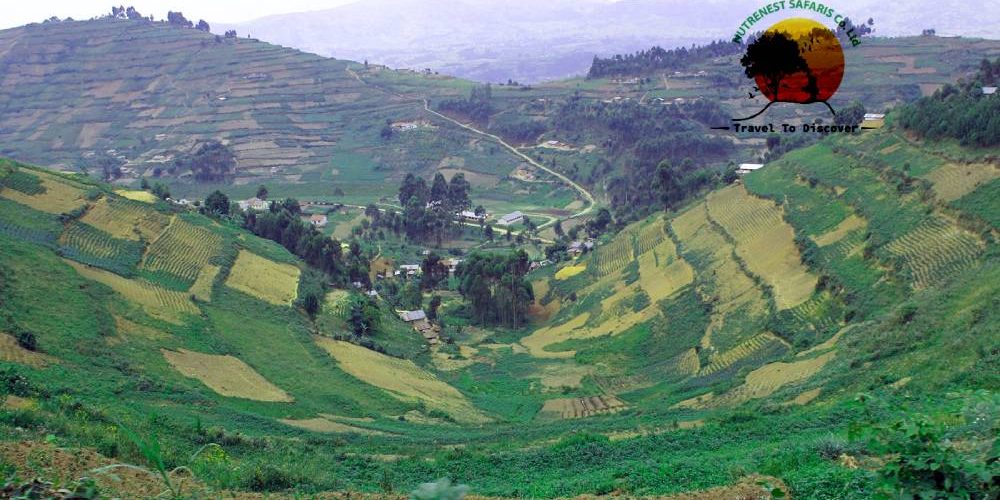When travelers talk about hiking in Africa, names like Kilimanjaro or Mount Kenya often lead the conversation. Yet tucked quietly in western Uganda lies a range that offers a rare mix of dramatic terrain, deep biodiversity, and untouched wilderness—the Rwenzori Mountains. Sometimes called the “Mountains of the Moon,” this UNESCO World Heritage Site provides a hiking experience unlike any other in East Africa.
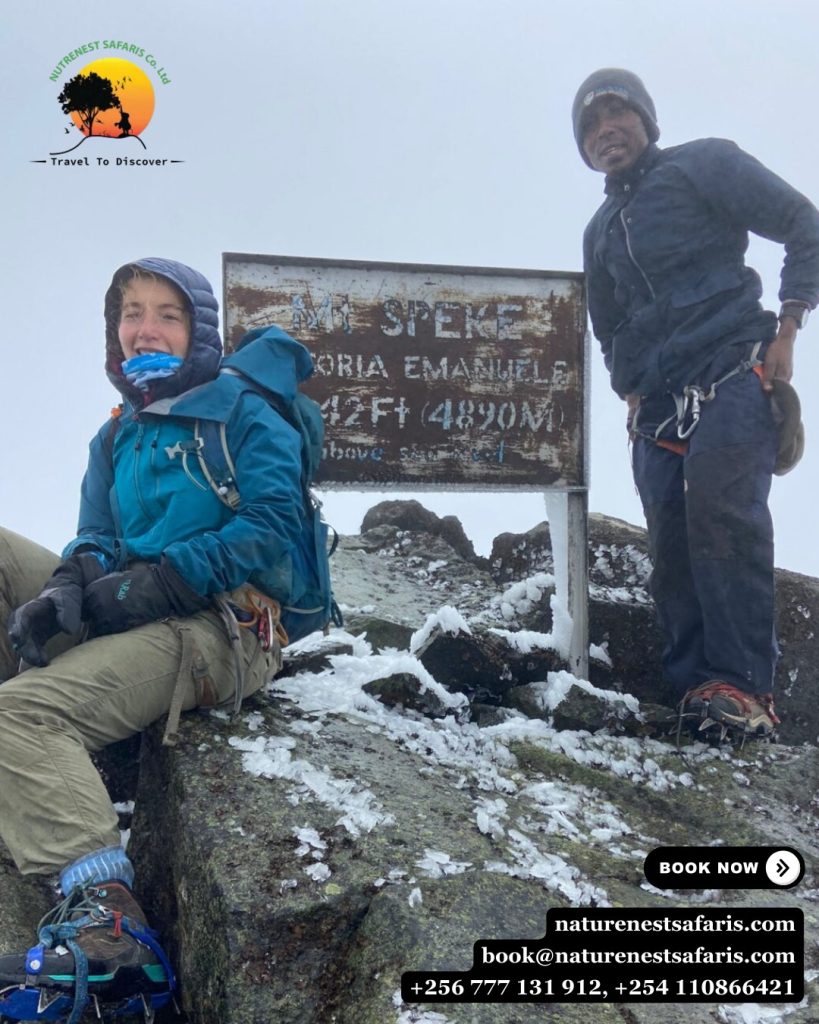
Landscapes That Change Every Hour
What makes Rwenzori hiking safaris stand out is the sheer variety of terrain. The trails start at dense rainforest levels filled with vines, tall trees, and moss-draped canopies. As elevation rises, hikers move through bamboo forests, heather zones with giant lobelias, and finally into alpine highlands, where snow occasionally dusts the summits.
These shifts in landscape create a journey that feels different every few kilometers. The 3-day Mahoma Trail, for example, begins at Mihunga Gate with rich forest scenes and ends near Lake Mahoma at high elevation, surrounded by sweeping views and crisp air.
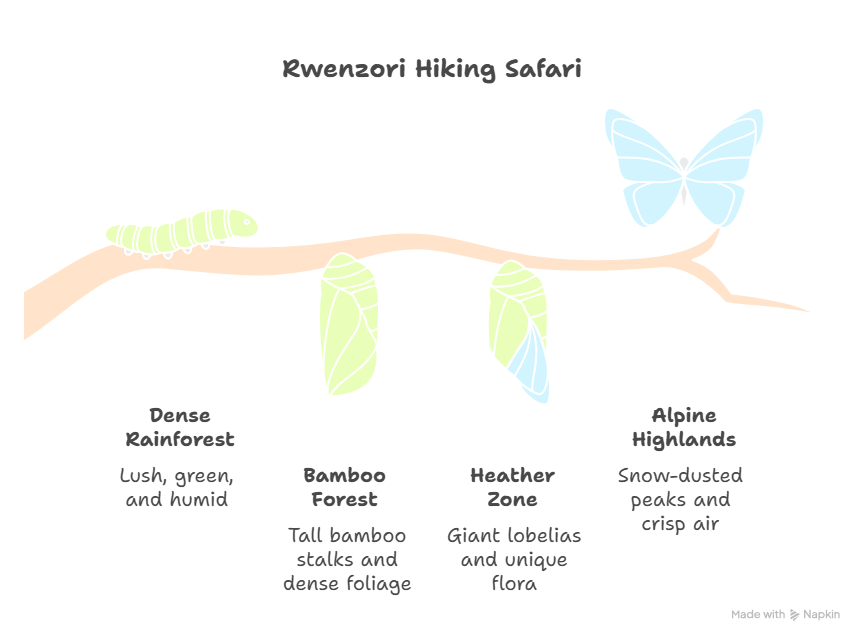
Wildlife in the Mist
The Rwenzori region is home to wildlife rarely seen in typical trekking areas. Blue monkeys, black-and-white colobus, and even L’hoest’s monkeys are common sights along the trails. Trekking paths also follow elephant tracks through bamboo forests. For those who love wildlife but don’t want to be in a vehicle, this range offers a perfect walking safari.
Bird lovers will also find this area rewarding. Though not as famous as the Mabamba Birding Safari for shoebill sightings, Rwenzori hiking safaris offer an exciting birdwatching experience. The forests are alive with species like the Rwenzori turaco and sunbirds, making the region a strong addition to East Africa’s growing list of bird watching safaris.
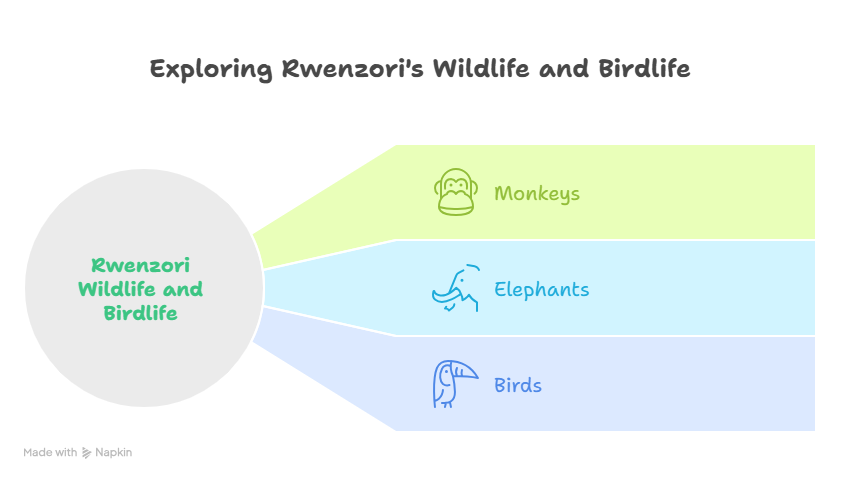
Trails for Every Type of Trekker
One reason hikers often overlook Rwenzori is because they think it requires long expeditions or technical climbs. While mountaineers can challenge themselves on week-long summit routes, those seeking shorter, scenic treks can choose options like the Mahoma Trail. It loops over three days and includes camping beside crater lakes and trekking through untouched forest.
For those looking to pair wildlife, trekking, and photography, this trail balances effort with visual reward. No altitude climbing gear is needed, and guides from local communities ensure safety and insight throughout the trek.
An Off-the-Grid Adventure
Rwenzori hiking safaris attract a certain kind of traveler—one who values raw beauty, quiet trails, and authenticity. The routes are never crowded. Campsites feel remote. Each night under canvas includes mountain views, forest sounds, and skies untouched by city light.
The mountains also give a cultural experience. Passing through small villages and working with local guides brings a layer of connection often missing in mainstream parks. The people who live near the range have long protected it, and trekking here supports sustainable tourism efforts that keep it wild.
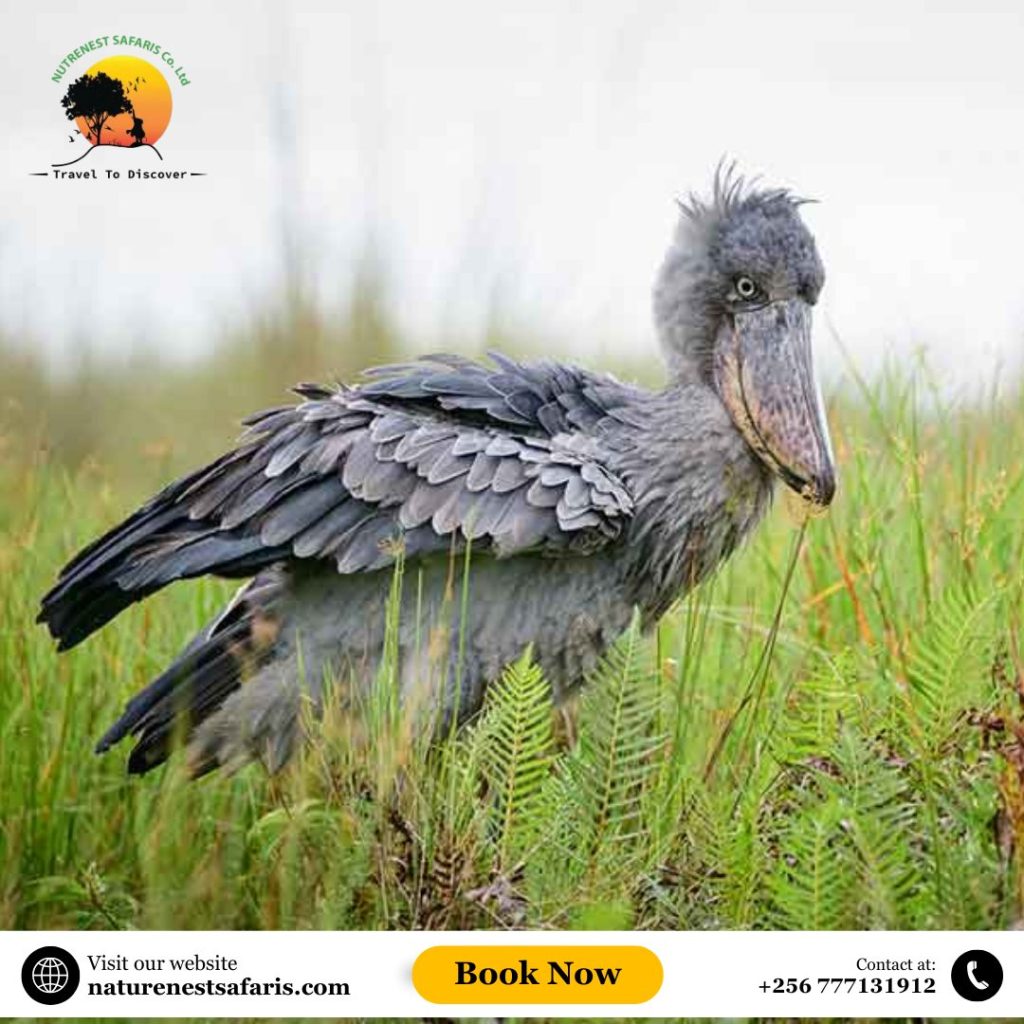
Final Word
If you’re planning a hiking trip in Africa and want something that offers both challenge and discovery, the Rwenzori Mountains deserve a close look. The mix of ecosystems, rare wildlife, and trail options make this a must-do for hikers, nature lovers, and anyone looking to experience the continent differently. Pair your trek with a Mabamba Birding Safari or other bird watching safaris for a full-circle adventure into Uganda’s wilderness.
